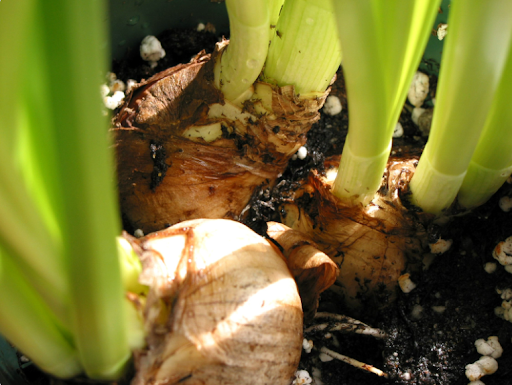Bulb Maintenance: Caring For Your Flowers Throughout The Year
- News
- 2115 views

With Spring just around the corner, daffodils and tulips are slowly starting to pop up. Nothing quite beats the cheerful feeling that colourful flowers bring this time of year. When planting bulbs it is important to carry this out at the right time in order to achieve optimal flowering. For flower bulbs that are starting to bloom now (from January through to March), these should be planted during September/October. For those that bloom later (March to May) these need to be planted in October/November.
How To Plant Flower Bulbs
There are lots of different ways that you can plant flower bulbs, let’s have a look at these:
1. Lay the bulbs evenly
You would need to start by laying out the bulbs at the proper distance apart, into soil that has been loosened to a depth of 10 inches. Then you can go ahead and plant the bulbs so they can easily root themselves.
2. Use a raised planting bed
A raised planting bed is a great way to plant bulbs without affecting the rest of your garden. After laying out the bulbs, cover them with a layer of soil (about 10-15cm thick), and regularly rake the soil to ensure no weeds start growing and the soil doesn’t dry out.
3. Natural planting
For a more natural look, you could always scatter the bulbs in your flower beds and just plant them wherever they land. Just make sure they aren’t planted too closely to other plants as their growth will be stunted if they don’t have access to enough sunlight.
4. Planting into grass
Bulbs look pretty if they are planted into grass, and this is really easy to do as well. Just lift a piece of sod for planting each cluster of bulbs, replacing the sod after planting the bulbs. You won’t end up with patchy broken-up grass either, the sod will bed back down into your lawn after a few days and become invisible.
A general rule of thumb when it comes to planting bulbs is that they should be at a depth of at least twice the bulb’s height. If they are planted too shallowly then the roots won’t develop and grow into the ground. Too deep and the bulbs can rot down or emerge too late into the season.
Flower Bulb Care
Flower bulbs are fairly low maintenance compared to other plants, and annual bulbs don’t require any work at all after planting them. They have all the nutrients stored in them that they need. Perennial bulbs do need a bit of fertilising, but again that is fairly minimal.
Perennial bulbs extract nutrients from the soil which is why they need additional fertilising. During the growing season, opt for inorganic fertilisers as they will contain the exact concentration of nutrients required. They also tend to dissolve more easily so are absorbed quickly by the bulbs.
Deadheading Flower Bulbs
Most flower bulbs don’t need deadheading, and some seed pods are really decorative. For example, botanical tulips, Fritillaria and Allium all have visually pretty seed pods. The only time you need to deadhead flower bulbs is if you have long-stemmed tulips that you are wanting to use as perennials. Otherwise, they will use all their energy to produce new seedpods rather than new bulbs.
If you have flower bulbs that rapidly increase in numbers, you may want to deadhead these too on a regular basis. You don’t want huge large clusters of bulbs as this will affect their growth. Once the leaves have died, dig up the bulbs which are tightly crammed together and replant them separately.
Diseases & Fungi In Bulbs
There are lots of living organisms in the soil which can hinder the growth of flower bulbs. By choosing the right location for the bulbs and providing regular maintenance, your bulbs will flower for a longer time. Keep an eye out for brown tips on a leaf during flowering as this could indicate you have planted a bulb in too shady a location, or a possible infestation of Botrytis. Cut the leaf away before any neighbouring plants are affected if you suspect they may become infected.



















